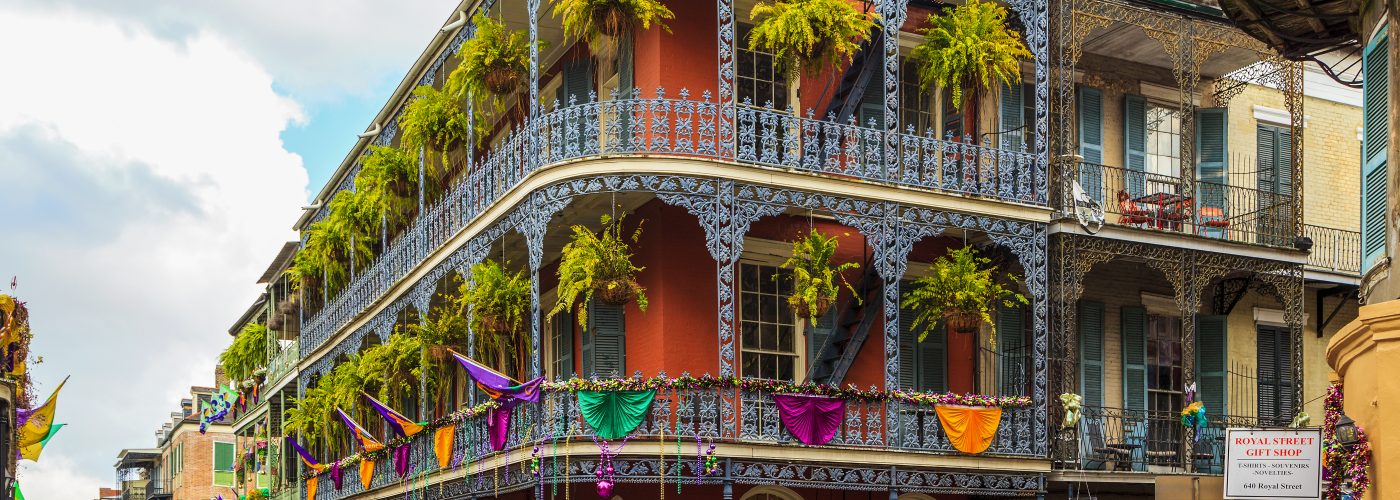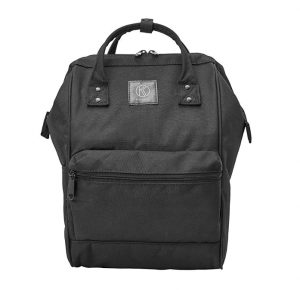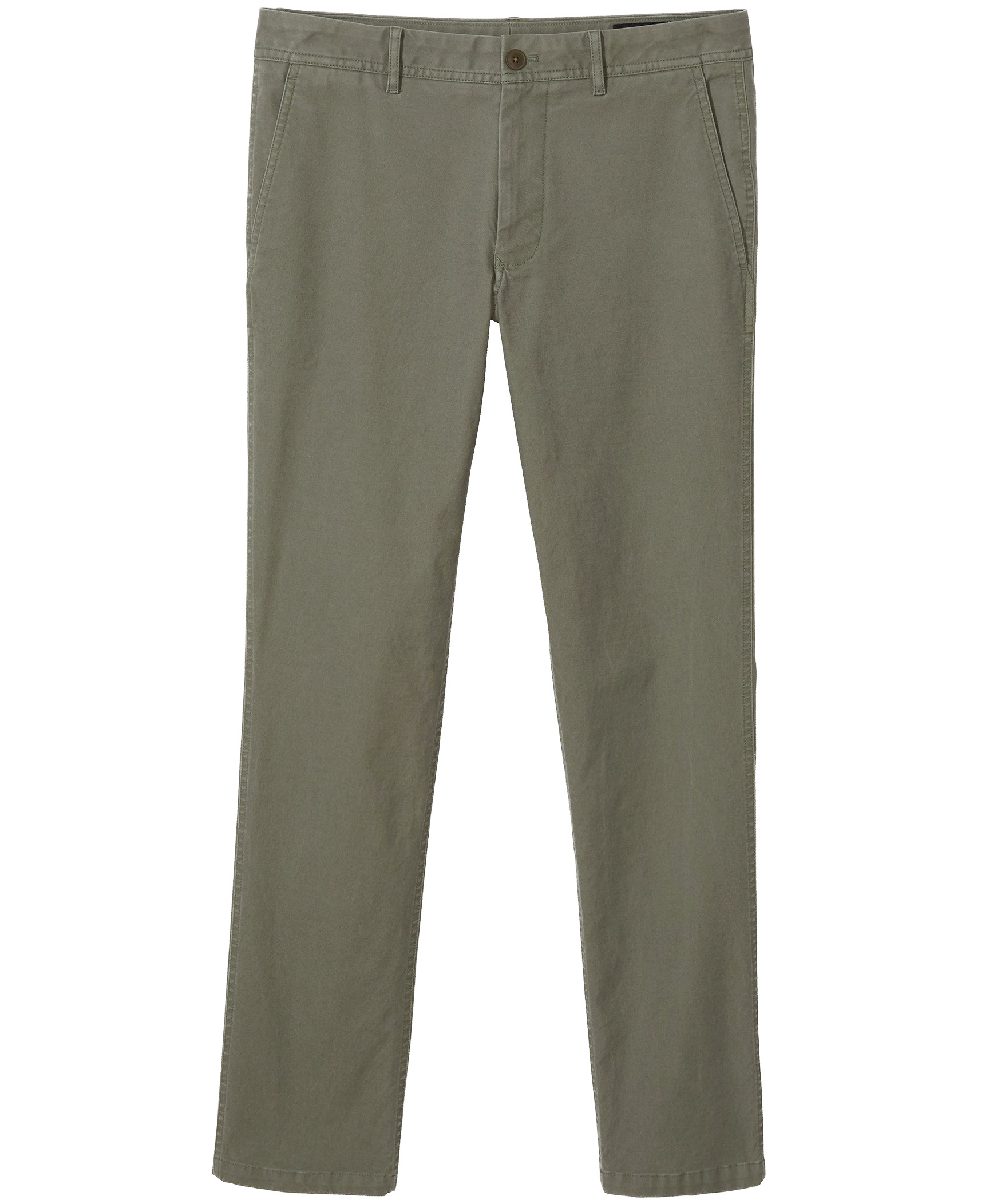The Big Easy is the home of gumbo and beignets, rich Creole culture, voodoo magic—and, of course, jazz. Whether you’re planning to come to New Orleans for Mardi Gras, Jazz Fest, or any other time of year, you’ll discover a colorful, historic, lively city with many fascinating layers.
But is New Orleans safe? The short answer is, it depends. On where you go, how you carry yourself, and, as with anywhere, sheer luck. And also on whether you know the places to avoid in New Orleans.
According to recent crime data, New Orleans’ violent crime rate is several times above the national average, and its property crime rate is also significantly higher than the rest of America’s. New Orleans, then, is not among the cities generally considered completely safe for travelers, unfortunately. While there are no official New Orleans travel warnings that we know of, NOLA is often included on lists of the world’s 50 most crime-filled cities. That said, murder rates in New Orleans have dropped in recent years, and robberies are also on the decline.
Travelers should use common sense, follow practical safety tips, stay in the city’s safest areas, and know the areas to avoid in New Orleans to keep themselves safe.
Besides criminal activity, there’s also the danger of natural disasters in New Orleans, particularly hurricanes. In addition, New Orleans’ weather means that the city faces a higher risk of tornadoes than the rest of the United States.
As for terrorism, New Orleans is considered a realistic target, though city officials recently implemented a series of crime-fighting technologies that will prepare it “to prevent and react to acts of terrorism.” New Orleans has also partnered with the FBI to prevent and respond to terrorist threats.
Despite the grim statistics, New Orleans is still very much worth a visit. But you do need to know where to go, how to act, and the New Orleans neighborhoods to avoid. Read on for thorough advice about how to stay safe in New Orleans.
Tips for Staying Safe in New Orleans
- Like anywhere else, New Orleans crime is higher in certain neighborhoods. Know which New Orleans neighborhoods to avoid—and which to stick to. And definitely don’t visit the cemeteries without a formal tour group, especially after dark.
- If you’re walking, stay alert and, if possible, travel with a companion. After dark, avoid strolling around by yourself. Public transit, including streetcars and taxis, is relatively safe, but driving in New Orleans can present some problems—vehicle break-ins are quite common in New Orleans, as are traffic accidents.
- The French Quarter and Bourbon Street are popular with tourists but rife with petty criminals, scammers, and con artists. Enjoy exploring Vieux Carre, but do everything you can to avoid getting pickpocketed or scammed.
Top Travel Safety Products for New Orleans
Safe Places—and Places to Avoid—in New Orleans
Is New Orleans safe? Before you visit, learn about the dangerous parts of New Orleans, as well as the safer neighborhoods to visit.
In terms of New Orleans neighborhoods to avoid, gang violence has increased in the 6th District, which includes Central City, the Garden District, Hoffman Triangle, Irish Channel, Touro, and Zion City, where there have been shootings and homicides.
With regard to Central City specifically, it was once a thriving immigrant stronghold, then fell into disrepair—except for the recent revival of Oretha Castle Haley (OCH) Boulevard, which is certainly worth visiting. But after dark, don’t stray past that boulevard into other parts of Central City, which are areas to avoid in New Orleans.
Neighborhoods that have a particularly bad reputation because they cause significant spikes in New Orleans’ crime rate include Desire and Florida—parts of these two areas have crime statistics worse than almost anywhere else in the United States—as well as Viavant-Venetian Isles, Fischer Dev, Tulane-Gravier, West Lake Forest, Dixon, Pines Village, the Lower 9th Ward, and Treme Lafitte.
St. Claude, for its part, has substantially more assaults, robberies, burglaries, and thefts than the national average, and so should be considered an area of New Orleans to either avoid or take precautions when visiting. Much the same is true for Tulane-Gravier, St. Roch, Marigny, and Pines Village.
Another place to be wary of in New Orleans is Mid-City, for several reasons: First, if the city floods again, Mid-City will be one of the hardest-hit areas. Touring Canal Street should be safe, especially via streetcar, but don’t go too far southwest of Canal, as it can be dangerous and is considered one of the places to avoid in New Orleans.
For safer places to stay, consider areas with the lowest crime rates in New Orleans: Uptown and the Garden District especially (before Magazine, away from the river), but also the French Quarter’s most popular blocks, from Bourbon Street to Decatur Street, and from Canal Street to Ann Street, where violent crime is highly unlikely. Still, beware of pickpockets and scammers who prey on distracted tourists here. Other relatively safe neighborhoods in New Orleans include Lakeshore-Lake Vista, Lakewood, Lakeview, Audubon, and Black Pearl.
One final note regarding places to avoid in New Orleans: The city’s cemeteries are fascinating, historic, and haunting. Many tour companies offer informative tours. Definitely take these tours—but do not attempt to visit the cemeteries yourself, especially after dark. Criminals are known to hide behind the tombs and monuments, awaiting the perfect moment to mug or rob looky-loos.
How to Get Around Safely in New Orleans
To steer clear of New Orleans crime, the usual travel safety advice applies: Stay in well-lit areas where there are plenty of people, take someone you know along with you, walk alertly and with confidence, and do all you can not to look like a tourist—in New Orleans, this includes refraining from wearing Mardi Gras beads unless it’s actually Mardi Gras. Also, when you’re walking, beware of the city’s uneven sidewalks.
Taking public transit is somewhat safe in New Orleans—a global assessment of major cities’ public transportation systems ranks it fair to middling. New Orleans tends to have better traffic than some other major cities, though road fatalities have risen in recent years, so drive with caution.
Streetcars are plentiful and safe within the French Quarter—and between the French Quarter and the Garden District—at least until midnight. After that, stick with companions and taxis or ridesharing options. If you’re headed above Bourbon Street, toward Rampart, take a cab or travel in a group—whatever it takes to avoid walking alone after dark.
If you’ve driven here or rented a car with which to tour New Orleans, be aware that vehicle break-ins are a widespread crime within city limits. If you’re planning on storing belongings in your car, make sure they’re completely out of sight, preferably in the trunk, to save yourself from becoming a victim of this common New Orleans crime.
New Orleans Nightlife Safety Tips
A lot of the fun here happens after dark, which is why the city’s bars and clubs are always so crowded, but how safe is New Orleans’ nightlife? Staying safe in New Orleans at night means following a few general rules and using common sense: When you’re preparing to go out, stash only your ID, a single credit card, your phone, and, if necessary, a small, easy-to-manage purse. Never accept a drink you haven’t seen go directly from the bartender to you, and never drink any beverage that you’ve let out of your sight—date rape druggings have been known to occur in New Orleans.
The French Quarter and Bourbon Street
You can’t go to New Orleans, of course, without visiting the French Quarter and its world-famous main drag, Bourbon Street. The district, also called Vieux Carre, is the legendary birthplace of jazz and so much more. But is Bourbon Street safe? And is the French Quarter safe once you get beyond Bourbon Street?
The good news is that French Quarter crime is mostly limited to the types of pettiness typical of the world’s most popular tourist spots—you will have to stay alert to criminals like pickpockets, purse snatchers, and scammers, especially during times of elevated tourism, like Mardi Gras and Jazz Fest, and you may have to deal with the occasional aggressive panhandler. But overall, this isn’t a place where you have to fear for your overall physical safety, particularly during daylight hours, and especially if you stick to the safer Burgundy and Dauphine areas.
As you traverse the Quarter, be careful not to be distracted by pickpockets’ accomplices. If you’re traveling alone, consider taking a cab after the sun sets. Muggings aren’t unheard of here, so once Bourbon Street gets dark, keep your wits about you. This means that, to sidestep becoming a victim of New Orleans crime, you should limit alcohol consumption and avoid going around alone.
In the French Quarter, con artists are active. If someone attempts to aggressively clean your shoes or bet on something obvious, leave the scene as soon as possible—tourists are often targeted by the New Orleans shoe scam and various betting scams. On Bourbon Street, scammers try to sell faux metals as gold, or distract travelers with fake petitions or strange behavior so that someone else can pick your pocket. Credit card scams are also common in the French Quarter, so only withdraw money from established banks.
New Orleans Weather Risks
In 2005, Hurricane Katrina devastated the region, and, given how unpredictable New Orleans weather can be, there are no assurances that a similar event won’t happen again, especially in the face of escalating climate change. In addition, New Orleans suffers from a higher risk of tornadoes than the rest of the United States.
In case these types of natural disasters hit while you’re visiting New Orleans, head immediately to higher ground if there’s flooding, tune into local media so that you can follow official orders (including to evacuate or to shelter in place), stay indoors and away from windows and glass doors, lie on the floor under a sturdy object, and don’t bathe or use electrical appliances.
What to Pack
More from SmarterTravel:
- New Orleans Travel Guide
- 11 Best Hotels in New Orleans
- 11 Best Cheap Hotels in New Orleans
- 9 Haunted Hotels in New Orleans
- 10 Must-See New Orleans Attractions
- 12 Places to Hear Incredible New Orleans Jazz
- 10 Things You Can Only Do in New Orleans
- 10 Best Things to Do in New Orleans
- Shopping in New Orleans: A Traveler’s Guide
- How to Do a Weekend in New Orleans
- 10 Best Restaurants in New Orleans
- 12 Best Spots for Cheap Eats in New Orleans
- Everything You Need to Know About New Orleans Food
- What to Pack for New Orleans
- What to Wear in New Orleans
—original reporting by Avital Andrews
Editor’s note: This story was originally published in 2018. It has been updated to reflect the most current information.
We hand-pick everything we recommend and select items through testing and reviews. Some products are sent to us free of charge with no incentive to offer a favorable review. We offer our unbiased opinions and do not accept compensation to review products. All items are in stock and prices are accurate at the time of publication. If you buy something through our links, we may earn a commission.
Related
Top Fares From
Today's Top Travel Deals
Brought to you by ShermansTravel
4-Night Grand Canyon & Las Vegas...
Great Value Vacations
 vacation
$772+
vacation
$772+
Greek Isles: Luxe Last-Minute, 7-Nt, All-Incl....
Regent Seven Seas Cruises
 cruise
$8599+
cruise
$8599+
Asia: Business Class Round-Trip Flights to...
Business-Class
 Airfare
$2249+
Airfare
$2249+
















